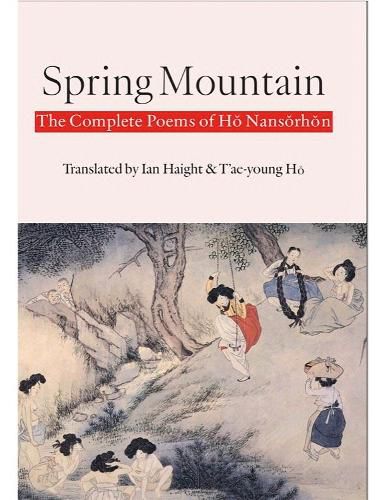Readings Newsletter
Become a Readings Member to make your shopping experience even easier.
Sign in or sign up for free!
You’re not far away from qualifying for FREE standard shipping within Australia
You’ve qualified for FREE standard shipping within Australia
The cart is loading…






The complete collection of poems by Nansrhn, a 16th century sequestered noblewoman and one of Korea's first feminists in literature, considered by many Korean scholars to be Korea's greatest poet.
Nansrhn's writes frequently in the Korean han style of "deep sighs," a thematically-styled poetry reminiscent of the Chinese "women poets of anguish," practiced by writers such as Li, Ch'ing-chao (1084-1151). In this style, hardships that cannot be overcome but only endured are named and lamented: the death of children, abandonment by husbands, and destruction of households from war are a few examples. She did not lose the means to express her feelings, however, and her poetry remains as testament to the process of her responses to her life.
The feminism of Nansrhn begins with her education and the act of writing poetry. If a Korean noblewoman of this period wrote about progressive themes that challenged social norms, she had to express the ideas by using personas and troping traditional formal structures. Poetry written in this manner could then be defended by the noblewoman as simply practicing variations on poetic tradition, despite the subtextual commentary on abandonment, experiences or opinions on sequestering, larger questions about socialized gender roles and identity, or what it means to be an artist.
$9.00 standard shipping within Australia
FREE standard shipping within Australia for orders over $100.00
Express & International shipping calculated at checkout
The complete collection of poems by Nansrhn, a 16th century sequestered noblewoman and one of Korea's first feminists in literature, considered by many Korean scholars to be Korea's greatest poet.
Nansrhn's writes frequently in the Korean han style of "deep sighs," a thematically-styled poetry reminiscent of the Chinese "women poets of anguish," practiced by writers such as Li, Ch'ing-chao (1084-1151). In this style, hardships that cannot be overcome but only endured are named and lamented: the death of children, abandonment by husbands, and destruction of households from war are a few examples. She did not lose the means to express her feelings, however, and her poetry remains as testament to the process of her responses to her life.
The feminism of Nansrhn begins with her education and the act of writing poetry. If a Korean noblewoman of this period wrote about progressive themes that challenged social norms, she had to express the ideas by using personas and troping traditional formal structures. Poetry written in this manner could then be defended by the noblewoman as simply practicing variations on poetic tradition, despite the subtextual commentary on abandonment, experiences or opinions on sequestering, larger questions about socialized gender roles and identity, or what it means to be an artist.